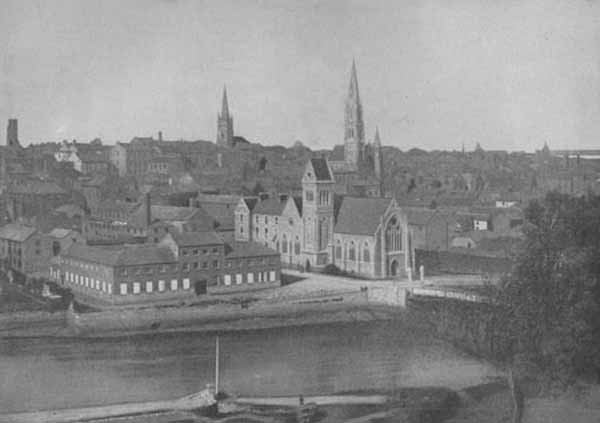DROGHEDA
From Atlas and Cyclopedia of Ireland (1900)
« County Longford | Book Contents | County Mayo »
Description of County Louth | Drogheda | St. Lawrence's Gate, Drogheda | Mellifont Abbey | Celtic Cross, Monasterboice | Louth Map
THE CITY OF DROGHEDA.—Drogheda, meaning the Bridge of the Ford, is situated on the river Boyne about four miles from its mouth. Although possessing many interesting ecclesiastical and architectural remains, it is best known on account of its historical associations. It is one of the most ancient places in Ireland. There it was that Heremon, son of Milesius, landed, after having lost his brothers, Aireach and Colpa in the bay. Drogheda suffered repeatedly from the incursions of the Danes, and later from the Anglo-Norman invaders. There Richard II. held his court in 1395, and, in one of the parliaments held there the famous Poyning's law was passed, 1494. In 1641, its Engish garrison was unsuccessfully besieged by Sir Phelim O'Neil. But the city is more memorably associated with one of the most atrocious massacres in human history—that of the garrison and the entire inhabitants by Oliver Cromwell in 1649. Neither age nor sex was spared, and with his characteristic blasphemous hypocrisy, the Puritan monster disclaimed any "credit" for the butchery, but gave all the glory of it to God.

Drogheda
Description of County Louth | Drogheda | St. Lawrence's Gate, Drogheda | Mellifont Abbey | Celtic Cross, Monasterboice | Louth Map
